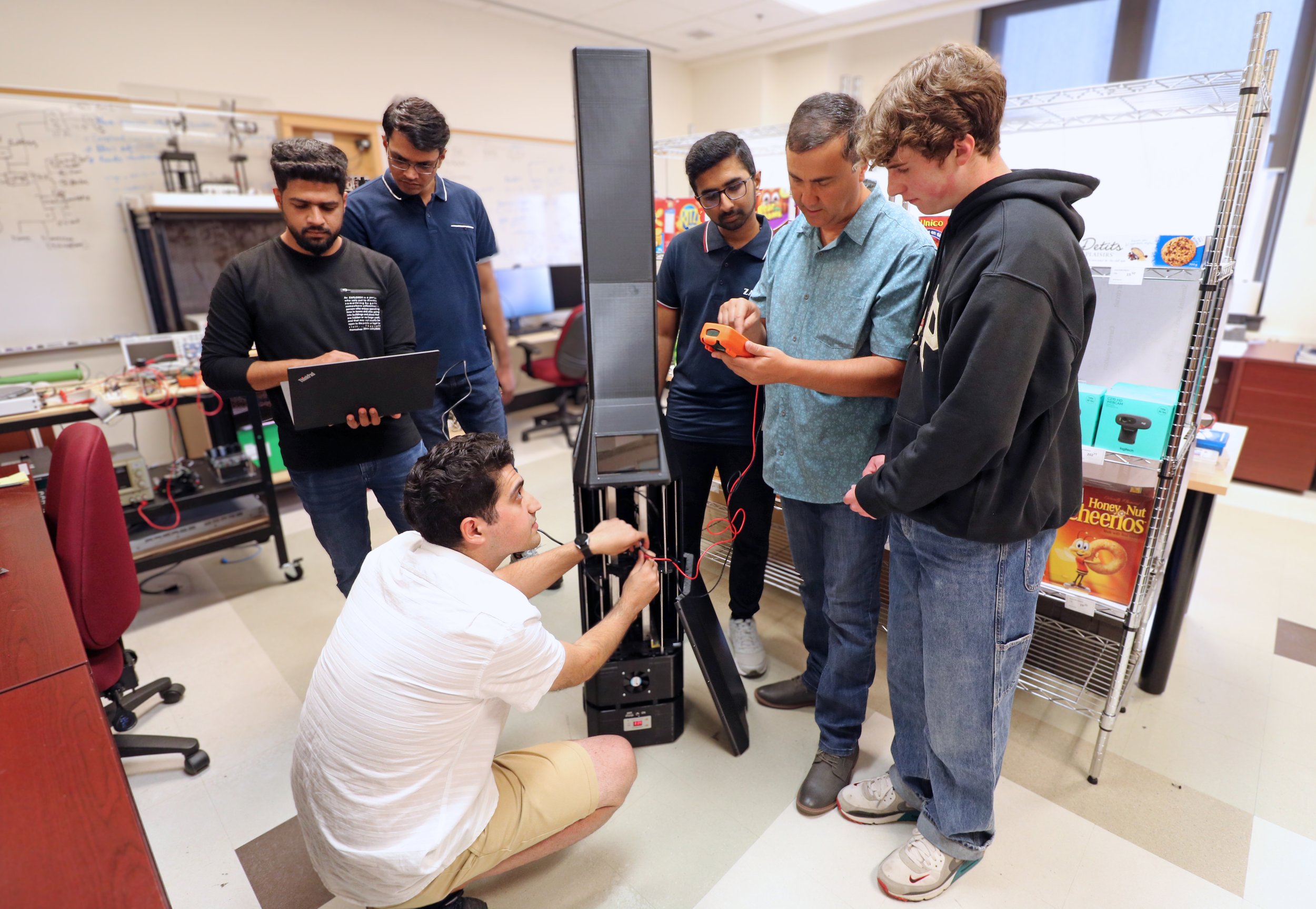43,000-square-foot expansion designed to foster innovative multidisciplinary collaboration
On October 11, Saint Mary’s University celebrated the new Sobeys Inspiration Hub, a four-storey, 43,000-square-foot building dedicated to supporting entrepreneurship and innovation at the university. The Sobeys Inspiration Hub is named in recognition of a $5-million investment in the building, part of an $18-million gift from the David & Faye Sobey Foundation, The Sobey Foundation and Sobeys Inc., as well as the personal donations of Paul and Marsha Sobey, and Janis Sobey-Hames and Chris Hames, all longtime supporters of the university.
The Sobeys Inspiration hub is designed to create a natural intersection for the business, academic and student communities. Its incubators, accelerators and technology labs will provide a catalyst for innovation where students can seamlessly participate in classes, workshops, internship opportunities, seminar series, conferences and business plan competitions. The Hub is adjacent to and integrated with the Sobey School of Business, home to one of Canada’s leading Commerce programs, which has attracted business minds from around the globe.
Students work on the DSC retail robot project
The building is the new home of the David Sobey Centre for Innovation in Retailing and Services (DSC). Established through the generous support of the late David F. Sobey, the Centre focuses on cutting-edge retail research, innovation and education and will feature a mock store for testing new retail concepts and technologies, a biometric lab for neuroscience research and a digital lab for developing apps and AI solutions. Students, researchers and industry partners work together at the David Sobey Centre to lead innovation in Canada’s retail sector.
“In today’s world, we must all think differently to make great things happen; where we not only seek, but embrace, new approaches to the old way of doing things,” says Michael Medline, CEO of Empire Company Limited. “That is why we are so excited to see the Sobeys Inspiration Hub come to life. This environment is about tapping into potential, the incubation and growth of ideas, the space to challenge, take chances–and yes, even fail–and in turn, create greatness. Most importantly, it is a space where students are certain to thrive.”
A centrepiece of the Sobeys Inspiration Hub is the Arthur L. Irving Entrepreneurship Centre, supported by a $5-million gift from Arthur L. Irving, Sandra Irving DCL’10, Sarah Irving, the Arthur L. Irving Family Foundation and Irving Oil Limited. The Arthur L. Irving Entrepreneurship Centre addresses the needs of the modern student, fostering an ‘entrepreneurial mindset’ across all faculties. It features a collider space, discovery zone, digital prototyping lab, meeting spaces and a podcasting production studio. Most notably, this campus expansion arrives at a time when the university is engaging more students than ever across the region and Saint Mary’s students are consistently achieving high-level results in national entrepreneurship competitions.
“We are proud to support Saint Mary’s University in their pursuit to provide the very best in business education, instilling the values of hard work, respect and passionate commitment to community," says Arthur Irving. “We are honoured to have the Arthur L. Irving Entrepreneurship Centre as part of The Sobeys Inspiration Hub, inspiring the next generation of entrepreneurs in Atlantic Canada.”
The Sobeys Inspiration Hub is a catalyst space that energizes the connection between the Sobey Building and the Loyola Academic Building, fostering innovative multidisciplinary work, and strengthening the connectivity and engagement of Saint Mary’s University’s more than 6,600 students, professors and researchers across all faculties, including Arts, Science, Graduate Studies and Research, and the Sobey School of Business. The hub will also play a vital role in the activities of the David Sobey Centre for Excellence in Retailing and Services.
“The way students learn as well as how and where they learn is a strong consideration for us. This transformational addition to our campus is a demonstration of how we are responding to the needs of our curious, forward-thinking scholars who need the environment and resources for those natural collisions to happen–so different perspectives can come together to create innovations for the times ahead,” says Saint Mary’s University President and Chancellor, Robert Summerby-Murray.
In an early effort to spur entrepreneurship and innovation for the province, the Government of Nova Scotia made a significant contribution to this project with its funding of $11 million in 2018. The Government of Canada is contributing $8 million to support green energy and green infrastructure on campus, which includes the Sobeys Inspiration Hub.
“The Government of Canada is proud to have contributed to the Sobeys Inspiration Hub, a space on campus that will provide programming designed to help under-represented groups, as well as supporting small business owners, those with an interest in entrepreneurship and those seeking employment services. This outstanding addition to Saint Mary’s campus will make the possibility of entrepreneurship a reality for more community members,” says Andy Fillmore, Member of Parliament for Halifax.














